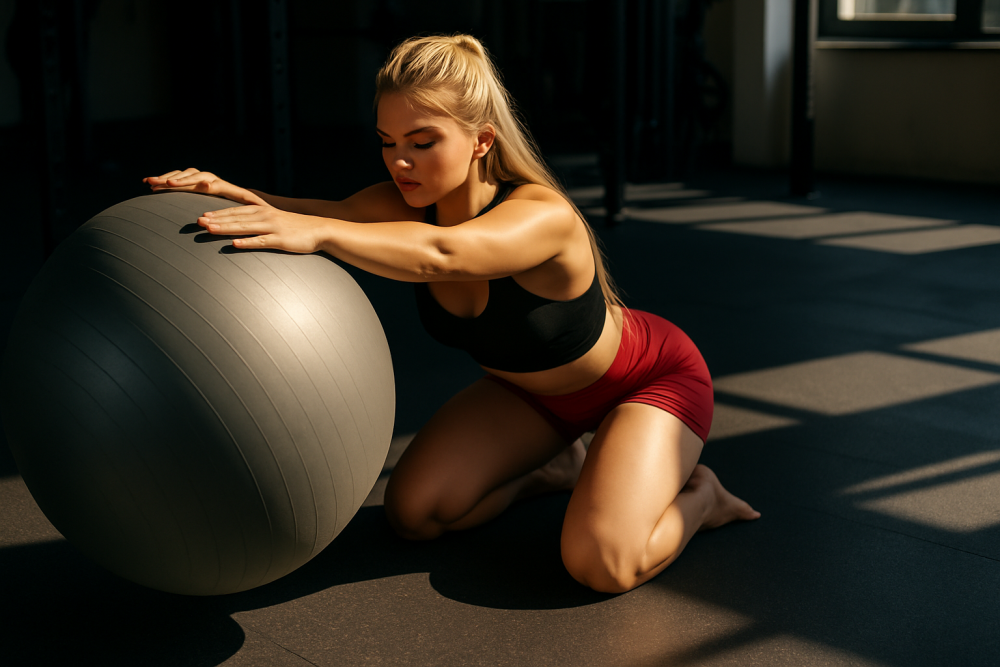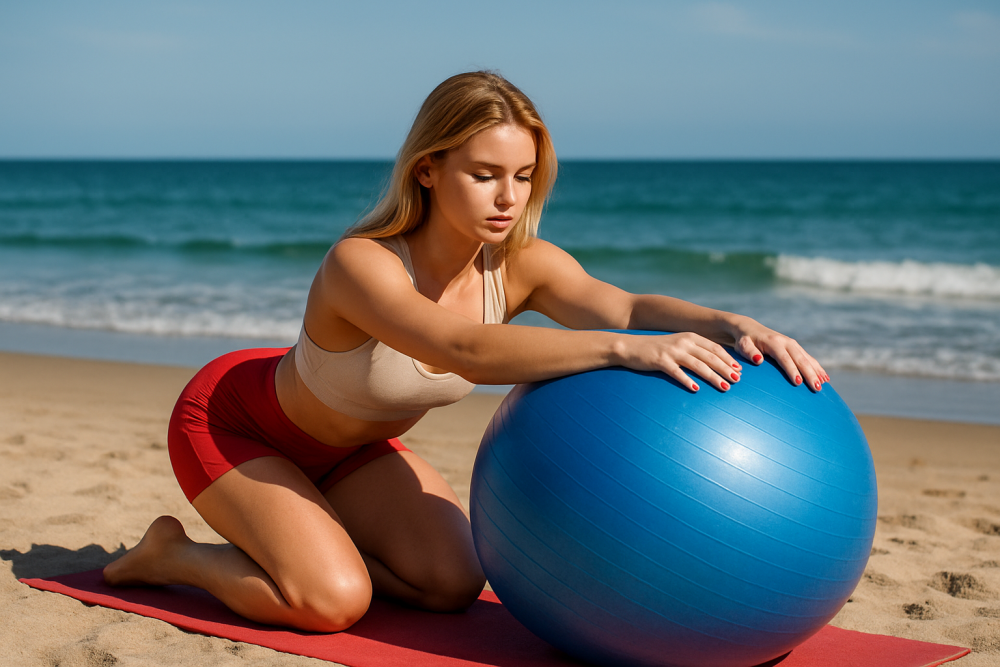Contents
Ball Lat Stretch
A Simple Yet Powerful Stretch for Better Mobility and Posture
The Ball Lat Stretch is an underrated but incredibly effective stretch for targeting the latissimus dorsi (the large muscles on the sides of your back). Whether you’re an athlete, someone who works at a desk all day, or simply looking to improve flexibility, this stretch can help unlock tightness, improve overhead range of motion, and reduce back and shoulder discomfort.

Benefits of the Ball Lat Stretch
Incorporating the Ball Lat Stretch into your routine offers several benefits:
- Increases Shoulder Flexibility and Mobility: By lengthening the lats and surrounding muscles, this stretch helps expand your shoulder’s range of motion. This is essential for improving your ability to reach overhead, throw, lift, or perform pull-ups without discomfort or strain.
- Relieves Upper Body Tension: The Ball Lat Stretch specifically targets tightness in the lats, shoulders, and upper back—areas that commonly become stiff due to poor posture, repetitive movements, or intense upper body workouts. Regularly stretching these muscles helps reduce aches and increase comfort during both workouts and everyday activities.
- Supports Better Posture: Tight lats can contribute to rounded shoulders and forward head posture. This stretch helps open up the chest and back, realigning the upper body for a more upright and balanced posture. Improved posture also leads to more efficient breathing and reduced back strain.
- Improves Overhead Performance: Whether you’re lifting weights, practicing yoga, swimming, or playing sports, many movements involve reaching or extending overhead. Loosening the lats with this stretch improves your overhead mobility, reducing the risk of injury and enhancing performance.
- Aids in Recovery and Daily Mobility: Ideal for post-workout recovery, the Ball Lat Stretch helps release tight muscles, decrease soreness, and promote circulation. It’s also a great addition to daily mobility routines, especially for those who sit at a desk for long hours or suffer from stiffness in the upper back and shoulders.
Recommended Sets and Frequency
Sets: 2–3 sets per side
Hold Time: 20–30 seconds per stretch
Frequency: 3–5 times per week or after upper body workouts

Ball Lat Stretch Step-by-Step Guide
Here’s how to safely and effectively perform the Ball Lat Stretch:
- Get a stability ball (Swiss ball) and place it in front of you on the floor.
- Kneel down in front of the ball with both knees on the floor and your toes relaxed behind you.
- Extend one arm (start with the right) and place your hand or forearm on top of the ball.
- Gently roll the ball forward, allowing your chest to lower toward the floor while keeping your arm extended. Your goal is to create a deep stretch through the side of your back (right lat).
- Keep your hips slightly back and spine neutral as you breathe deeply into the stretch.
- Hold for 20–30 seconds, then slowly return to the starting position.
- Switch sides and repeat with the left arm.

Ball Lat Stretch Variations
Depending on your mobility level or equipment, you can modify this stretch:
- Two-arm version: Extend both arms on the ball for a bilateral stretch. This version is ideal if you want a deeper, balanced stretch across both sides.
- Foam roller substitute: If you don’t have a stability ball, use a foam roller in the same kneeling position for a similar effect.
- Standing lat stretch with a wall or door frame: Place one hand overhead and lean into the opposite direction. It’s a good variation when a ball isn’t available.

Ball Lat Stretch Tips and Recommendations
Warm up first: Do a few dynamic shoulder or upper back movements before stretching for better results.
Don’t force the range: Ease into the stretch to avoid straining the shoulder or lat.
Focus on your breath: Inhale to create space, exhale to deepen the stretch. This enhances the effectiveness.
Use it post-training: Especially beneficial after pull-ups, rows, or shoulder workouts.
Great for desk workers: If you sit for long periods, do this stretch in your break to counteract tightness.
Final Thoughts
The Ball Lat Stretch is more than just a flexibility move—it’s a tool to restore movement, reduce tension, and improve your physical performance. By committing just a few minutes a few times a week, you’ll feel a noticeable difference in how freely your upper body moves and functions.
Follow our Social Media!












